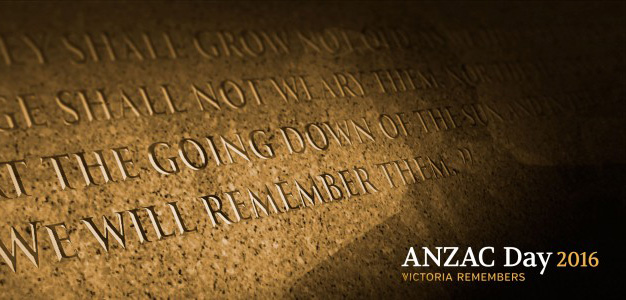They shall not grow old, as we that are left grow old.
Age shall not weary them or the years condemn
At the going down of the sun and in the morning
We will remember them.
![The Trumpet Calls [card]](https://www.mpnews.com.au/wp-content/uploads/2016/04/The-Trumpet-Calls-card.jpg) On every Anzac Day it is customary for these solemn lines, known as “The Ode of Remembrance”, to be recited. Quite often a speaker will then inform the assembly of Australia’s contribution to what was known as The Great War; of how a country of less than five million could put 416,809 men in uniform, over 60,000 of whom were not to return.
On every Anzac Day it is customary for these solemn lines, known as “The Ode of Remembrance”, to be recited. Quite often a speaker will then inform the assembly of Australia’s contribution to what was known as The Great War; of how a country of less than five million could put 416,809 men in uniform, over 60,000 of whom were not to return.
Official records state that a further 155,000 were wounded, gassed, or taken prisoner. Recent research by author David Noonan has pointed out, however, that this figure does not include those who were hospitalised through illness or injury; his opinion is that a more realistic figure would be 750,000.
Noonan states that, of the survivors, more than half were discharged as “medically unfit”. Of those not so classified, 60% applied for a pension in the post-war period. So four out of five survivors were damaged in some way.
From his research Noonan has estimated that as many as 62,300 of these survivors died, mainly in 1919 and 1920, and an additional 8,000 would die a premature death due to war-related causes in subsequent years. The figure for 1919-20 included 550 who died by their own hand, and the Depression years also took a heavy toll.
It was the 1930’s which claimed the lives of two of Australia’s best-loved heroes from World War One: Captain Hugo Throssell VC, and Major General Harold “Pompey” Elliott. The piece “The forgotten victims of war” provides an insight into the suffering experienced by the “survivors”. They, too, should be remembered on Anzac Day when we recite “The Ode” as so many of them “grew not old.”
Last year was highlighted by the anniversary of the landings on the Gallipoli Peninsula on 25 April, 1915. What is sometimes overlooked is that on the same day the Australian submarine, the AE2, successfully negotiated its way through the Dardanelles and entered the Sea of Marmara. Other allied submarines had tried and failed; the AE2 achieved what the British admiral (de Robeck) thought to be impossible. Our story on what has become known as “The Silent Anzac” has special significance for the Mornington Peninsula as one of the crew, Leading Signalman Albert Thomson, subsequently lived in Hastings and is buried in the Tyabb cemetery.
While the AE2 was scuttled with no loss of life, our RAN story from World War Two provided a bleak outcome. The small minesweeper HMAS Goorangai, sliced in half when crossing from Queenscliff to Portsea, was lost with all hands.
Finally, there is the story of Robert Bartlett Bates, perhaps the bravest man listed on the cenotaph at Mornington. He was awarded the Military Medal at Gallipoli (Lone Pine) and on the Western Front (Pozieres) but, unlike the two VC winners featured in this edition (Hugo Throssell and George Ingram), he never picked up a rifle.
_____________
This special edition of The News provides a glimpse of a few aspects of Australia’s war history; we think it is important to remember the legacy handed down from the first Anzac Day, 25 April, 1915. As well as the brave volunteers whose graves are scattered across the Gallipoli Peninsula, the Western Front, Palestine and elsewhere, we should also include in our thoughts those men who returned, some of whom were condemned to early deaths and others who were so shattered emotionally that they could never resume the type of life that they had led prior to 1914.




